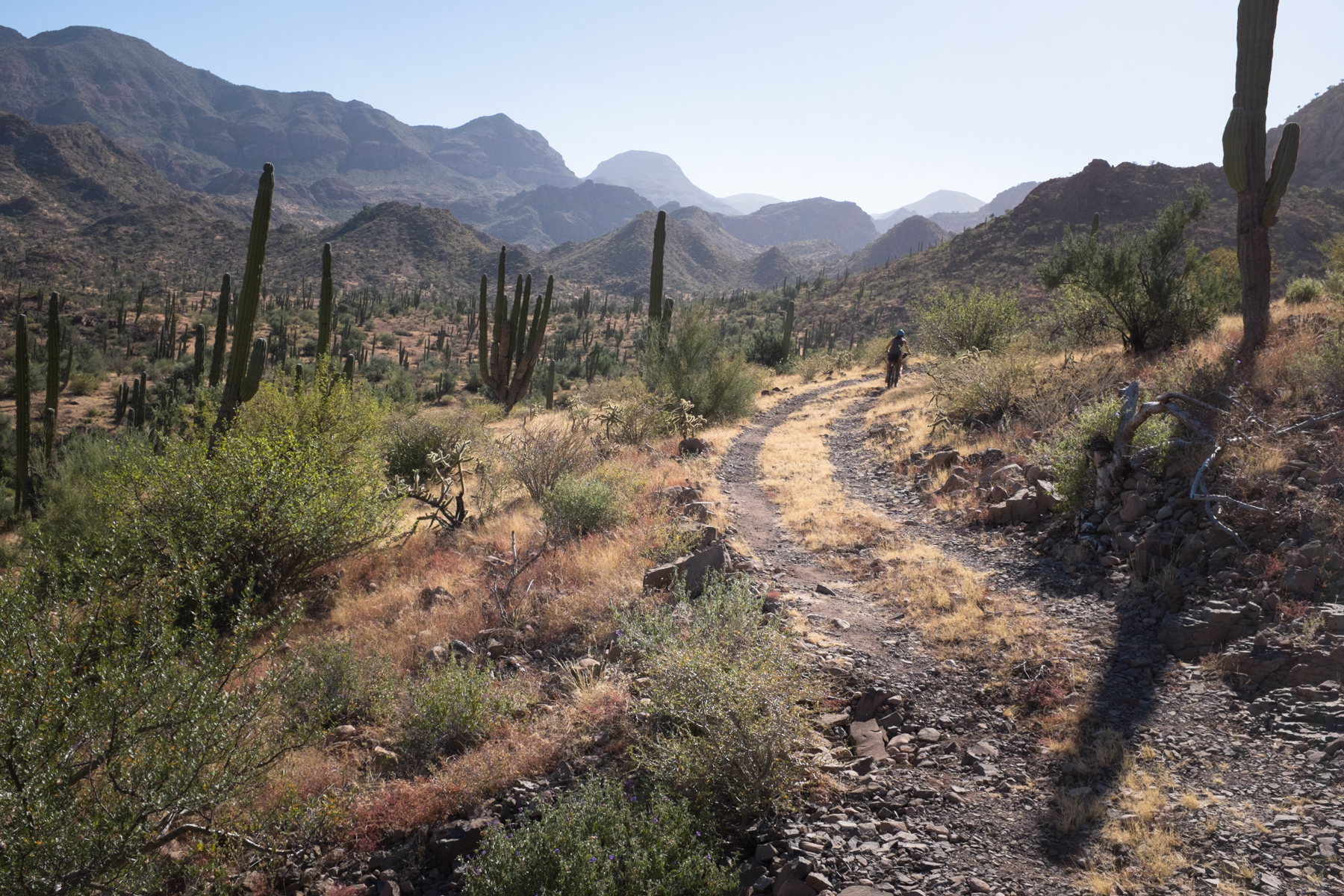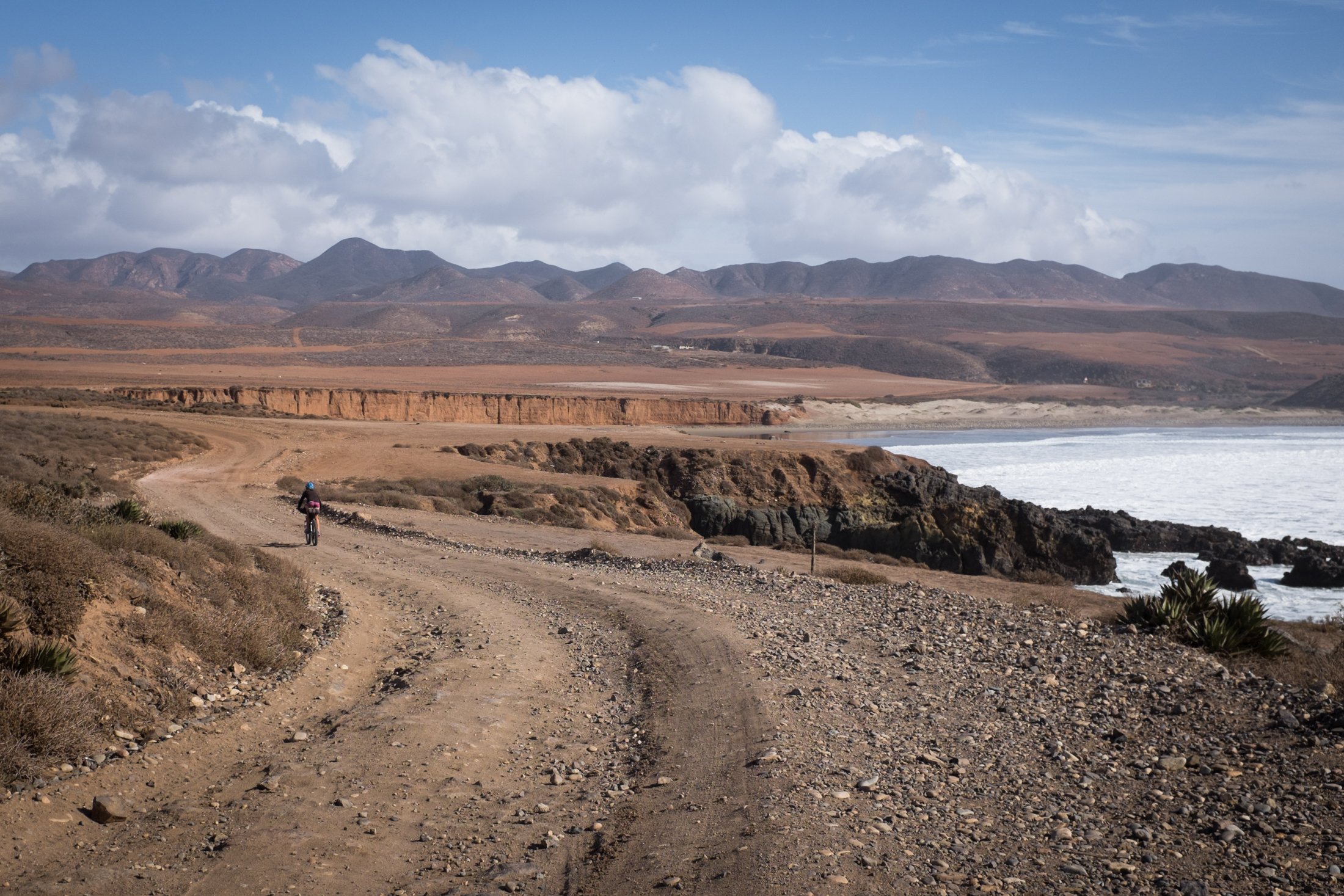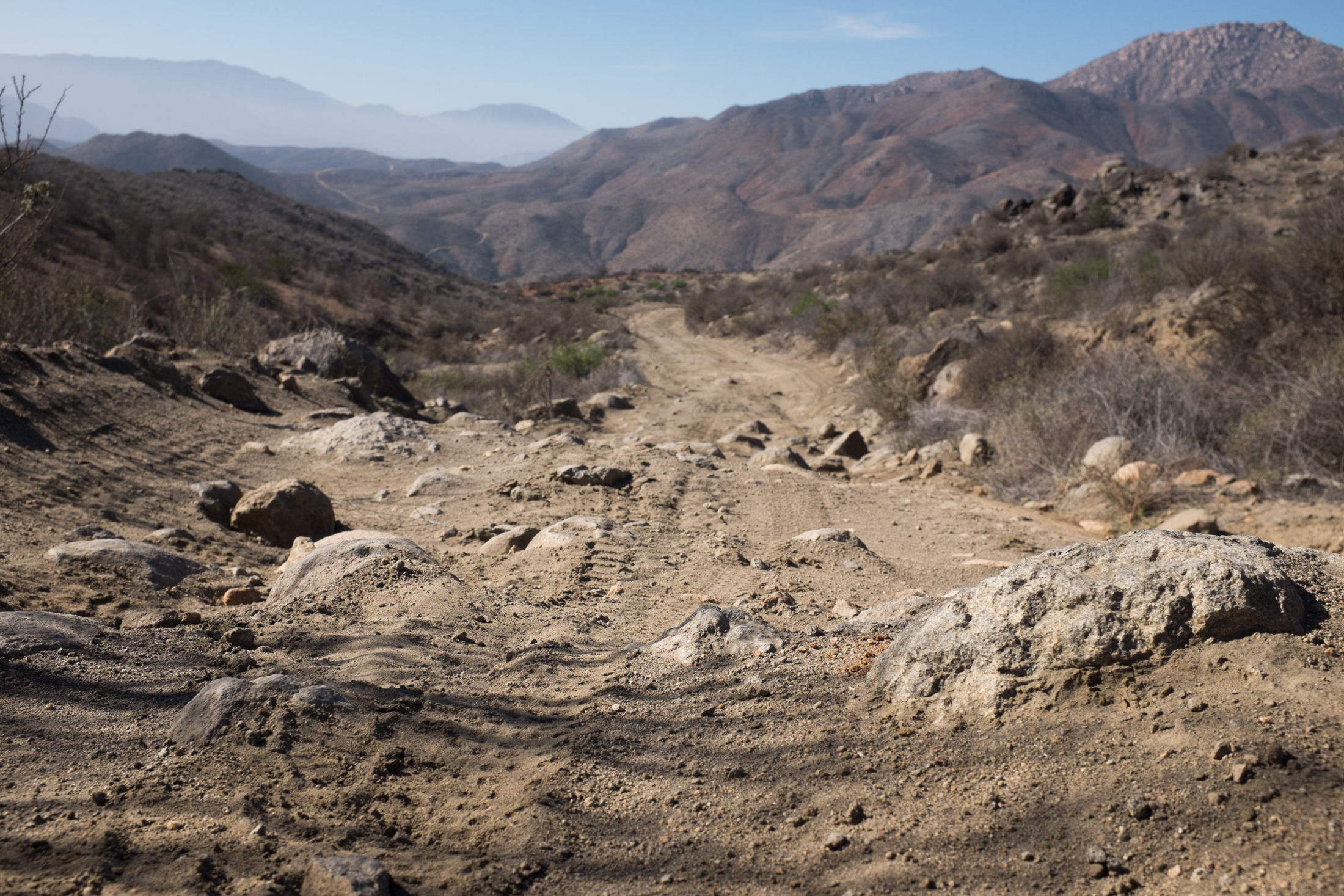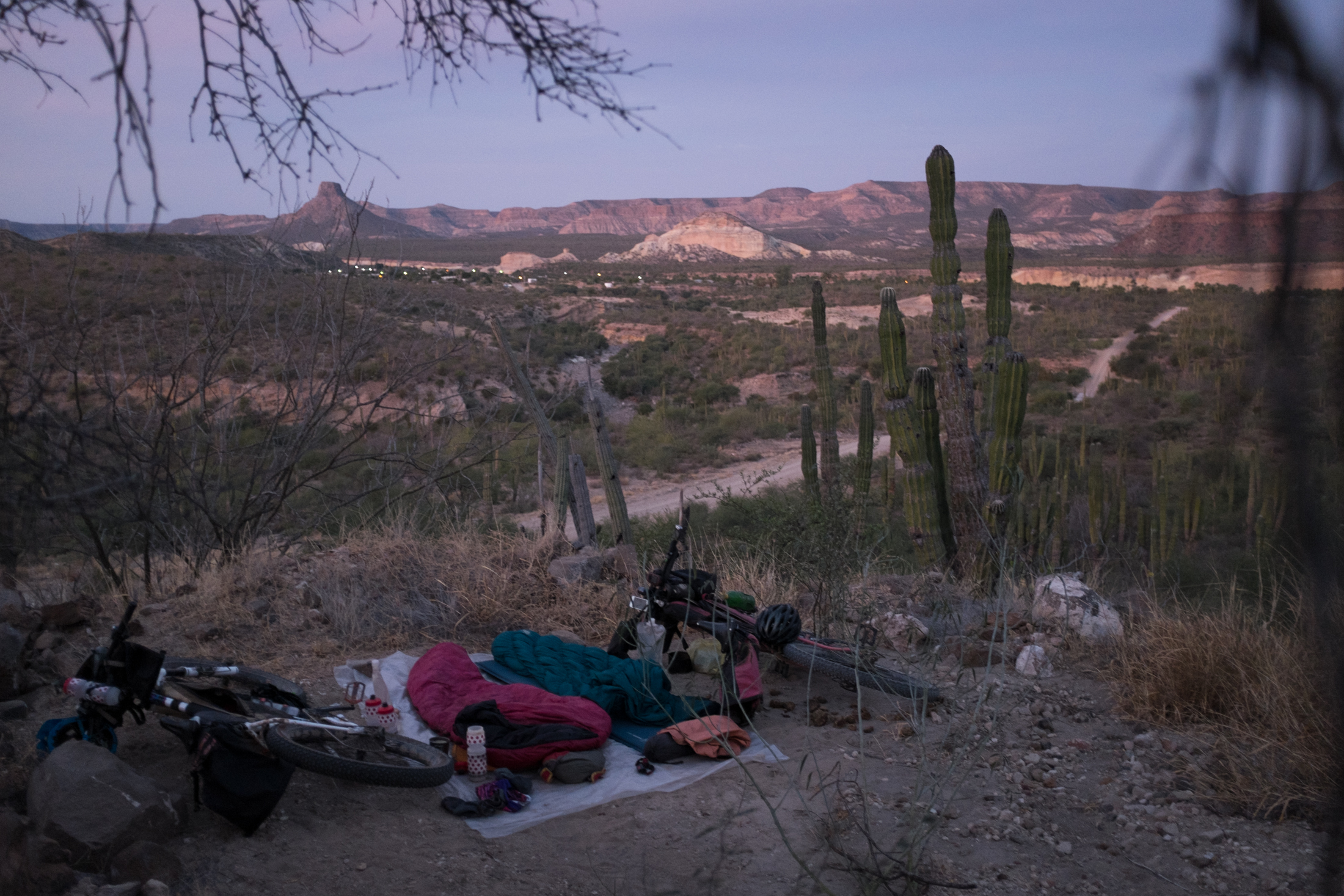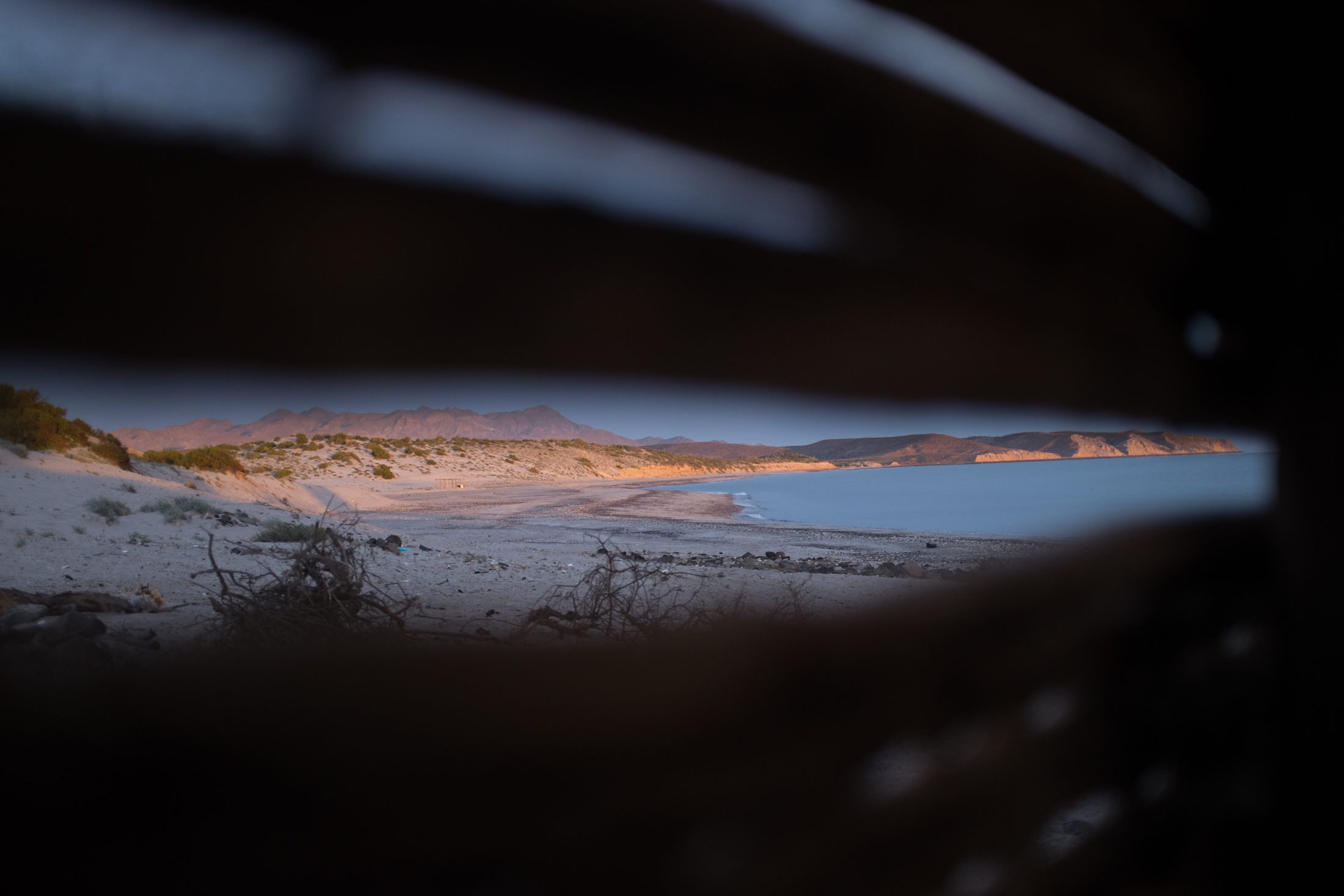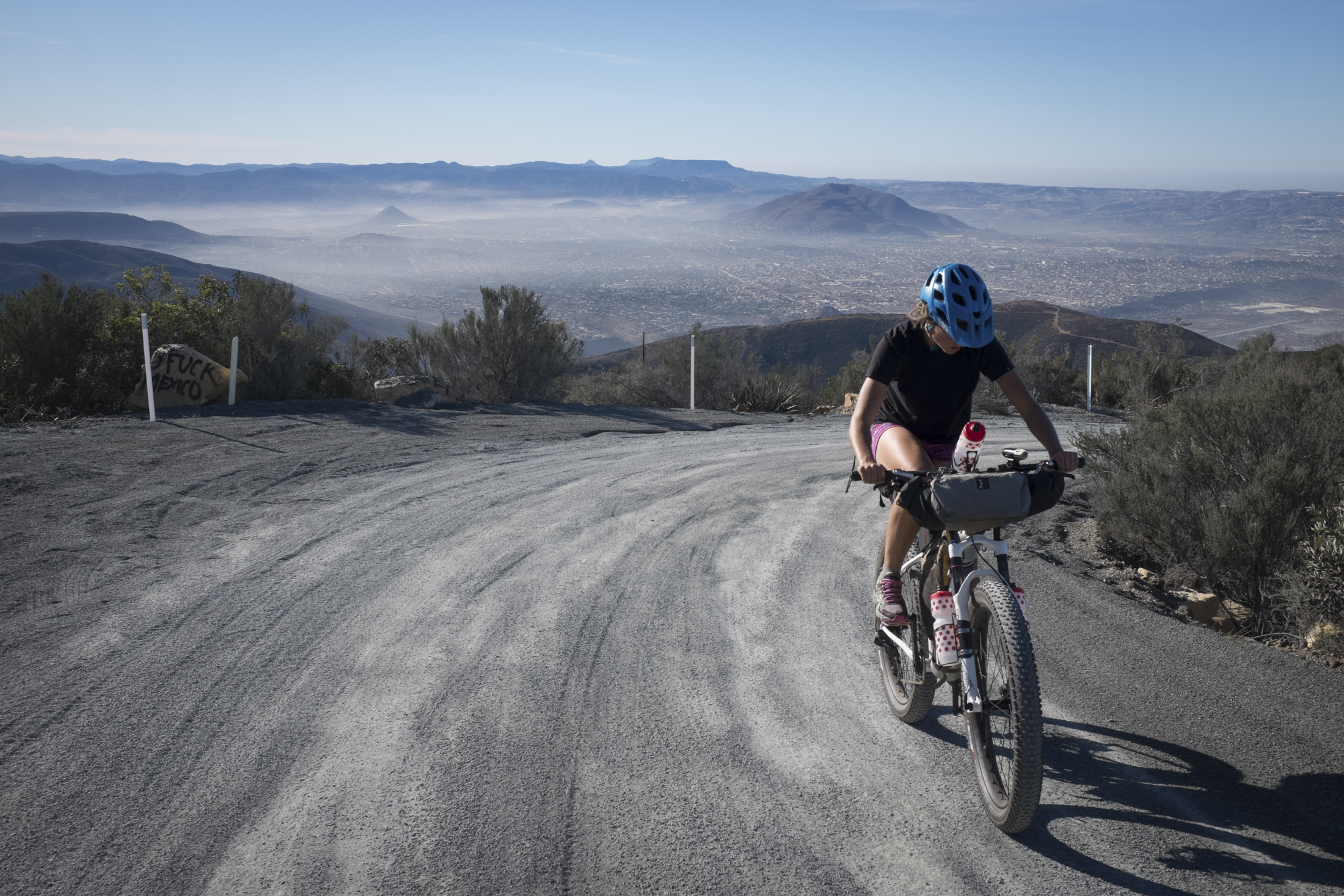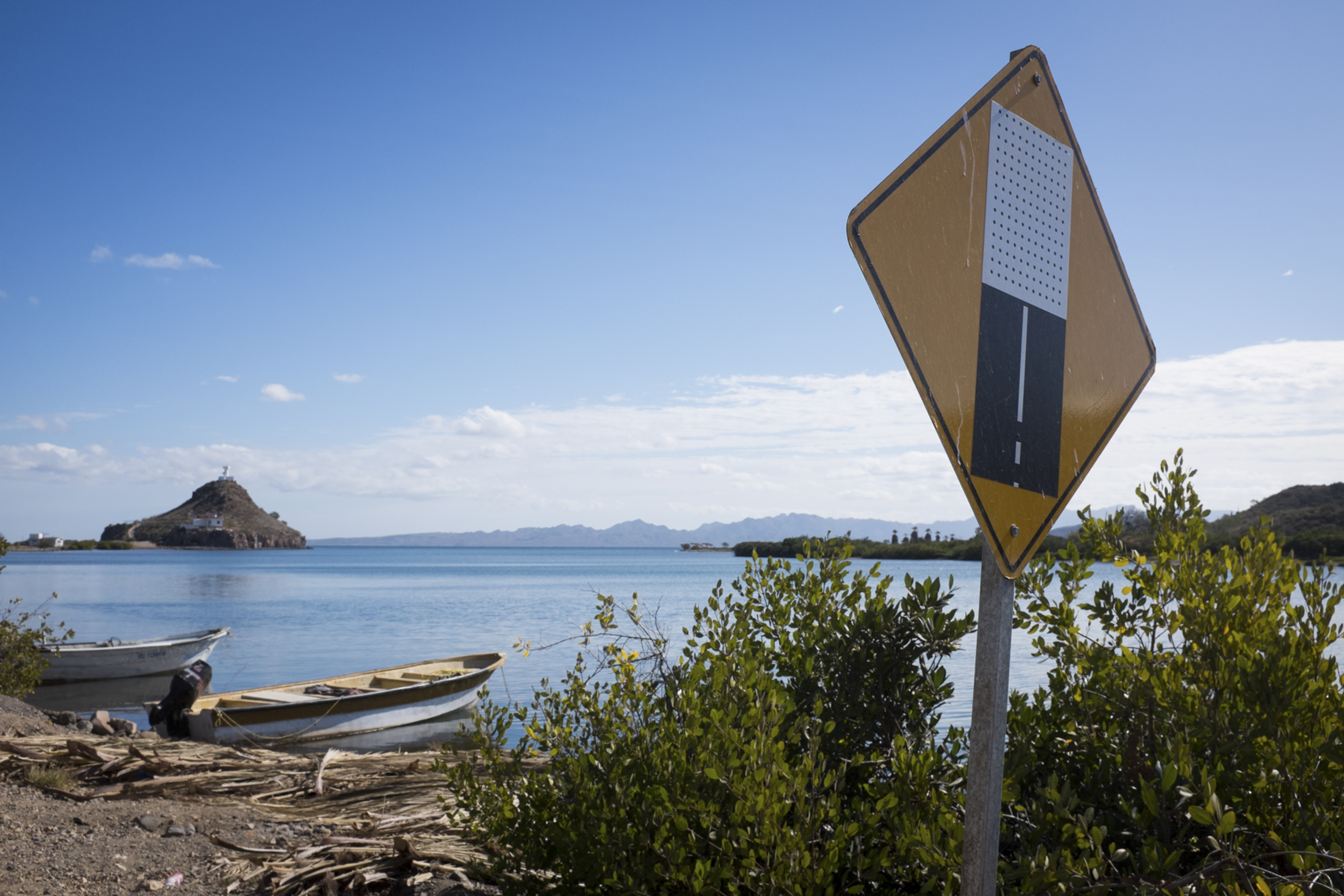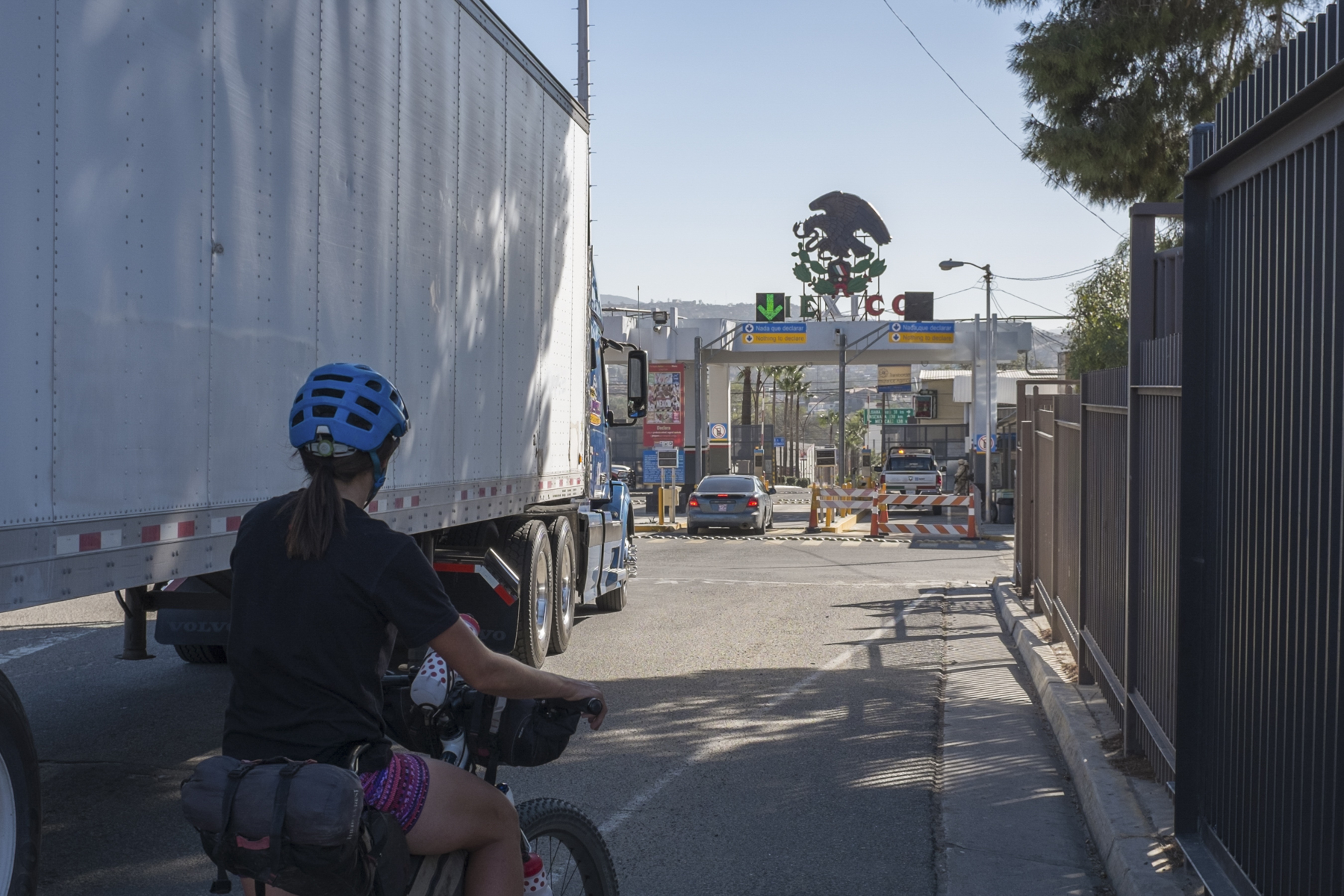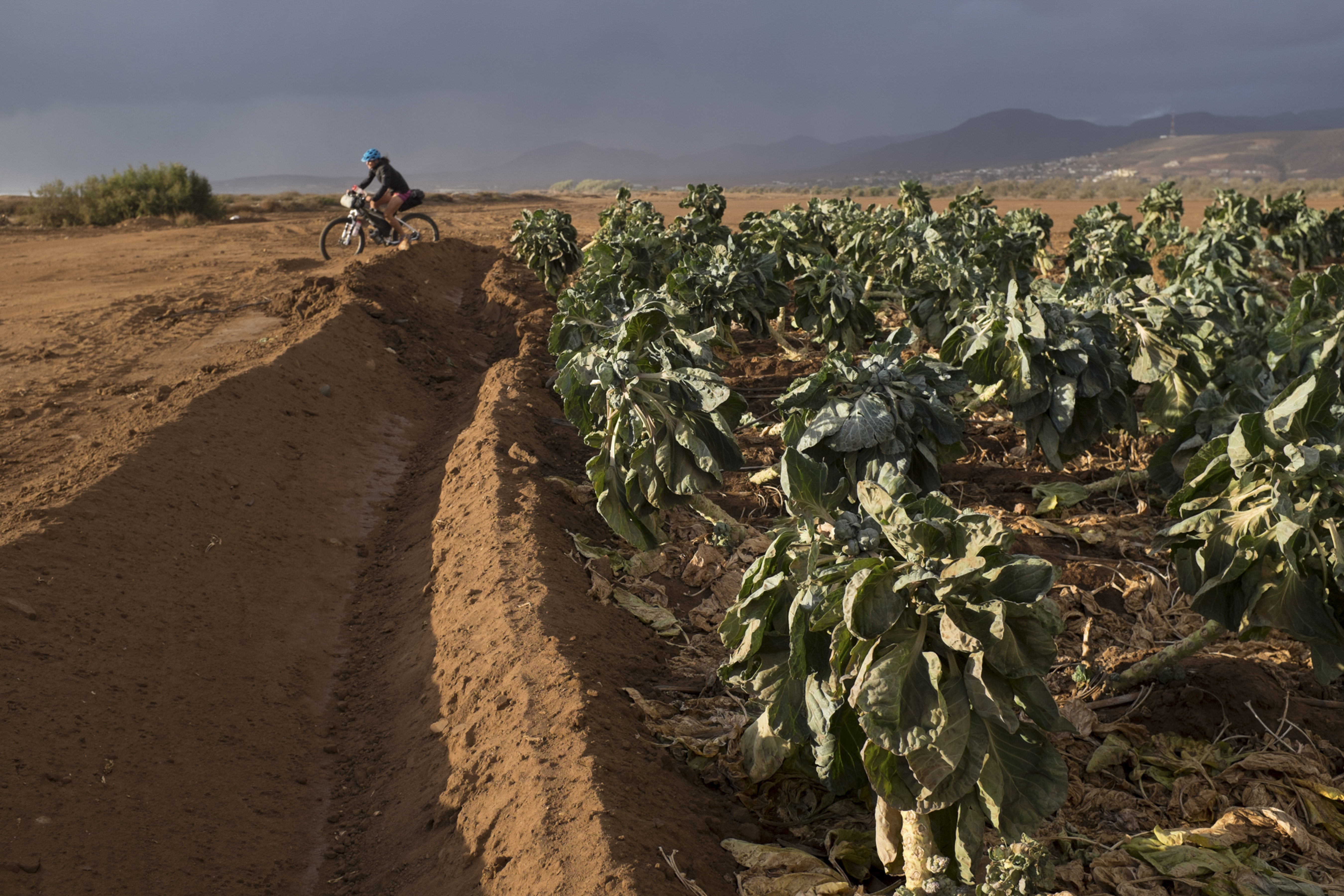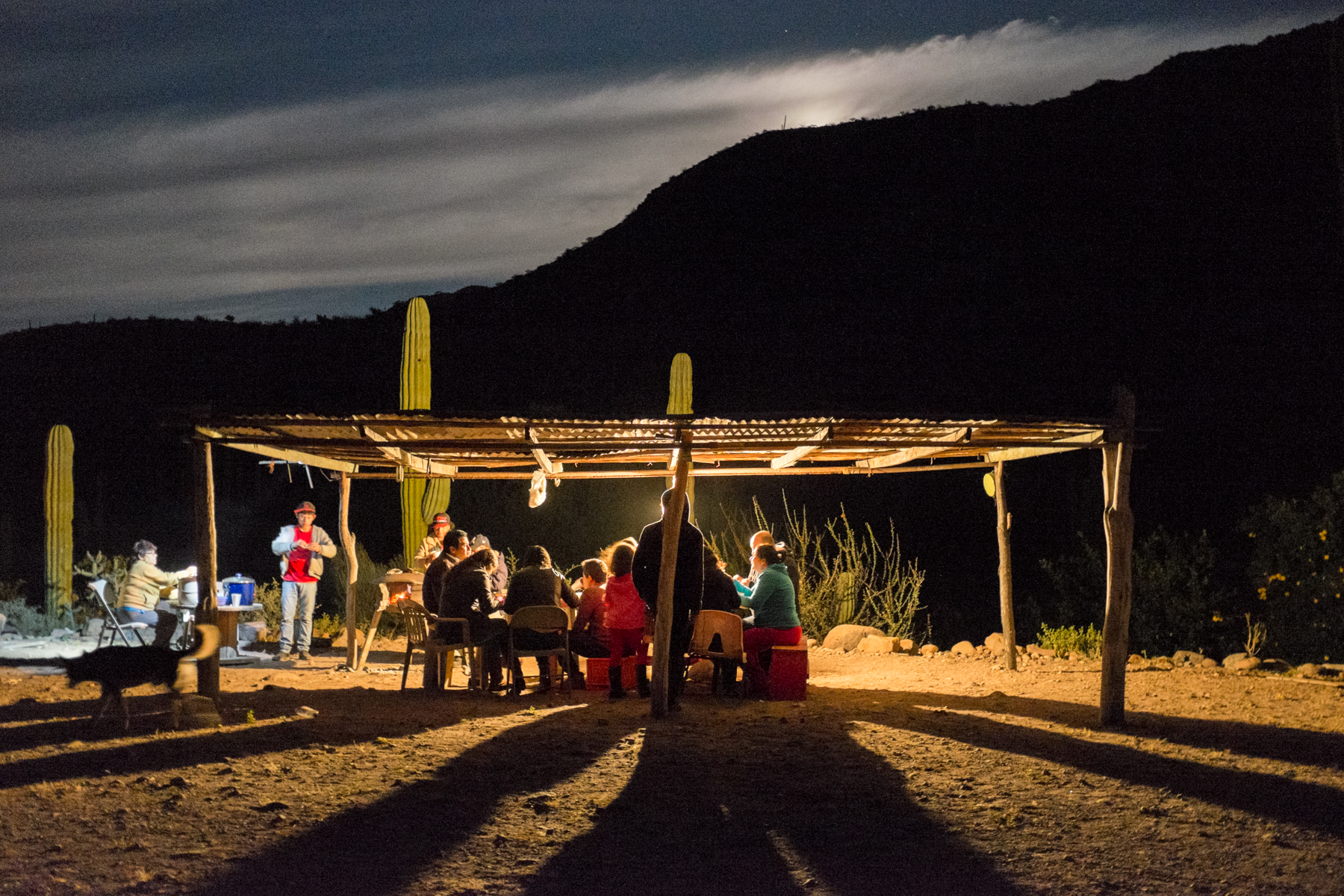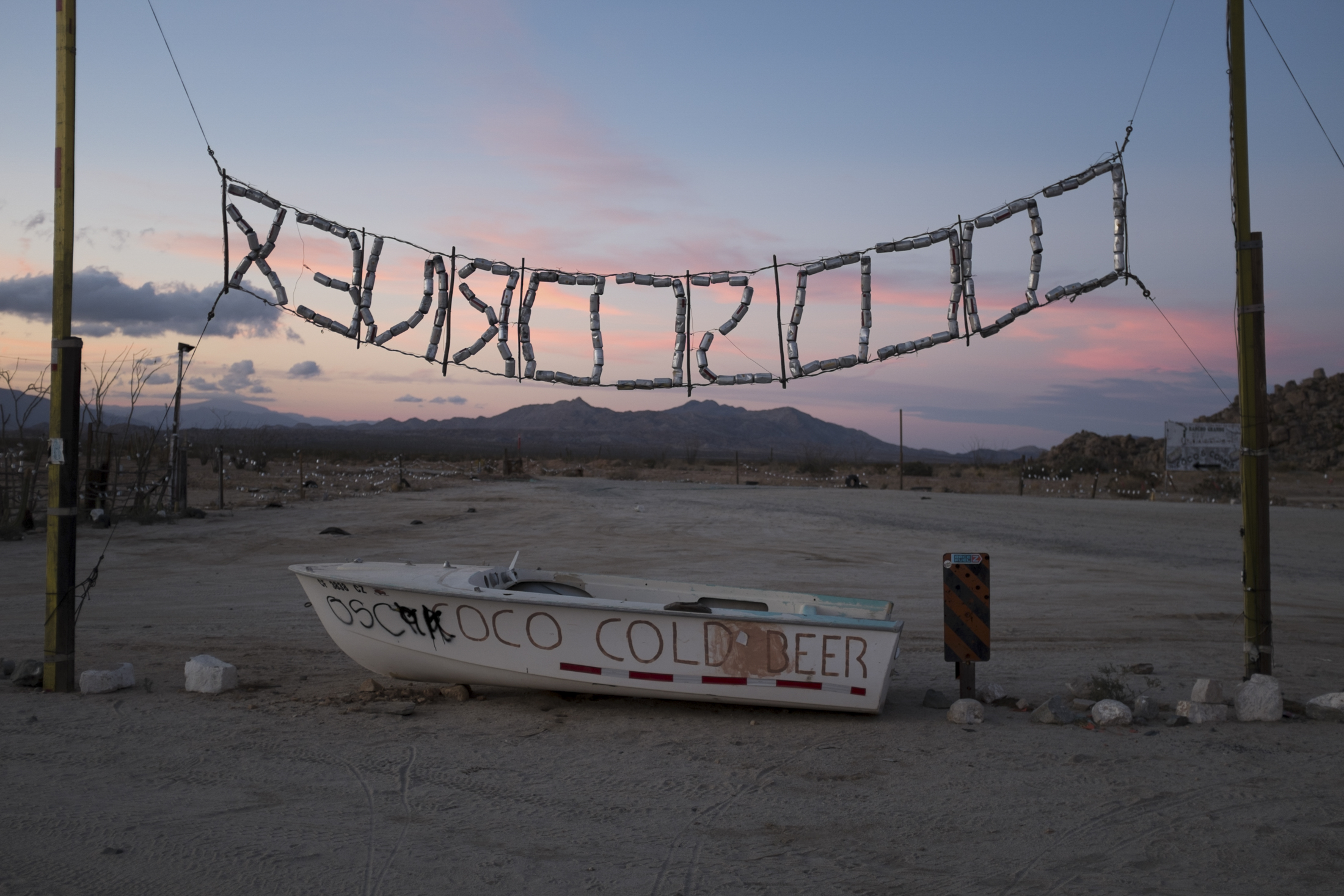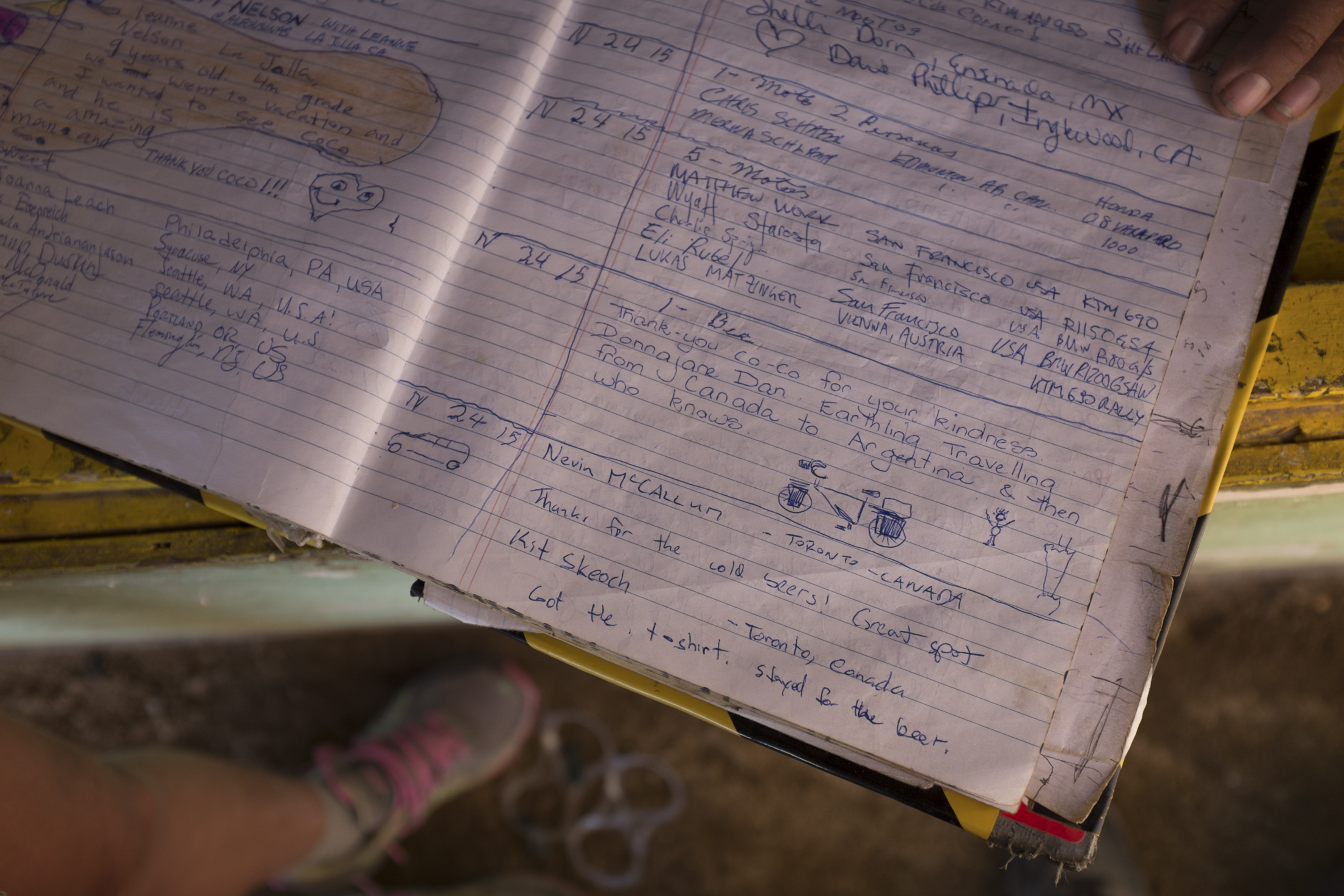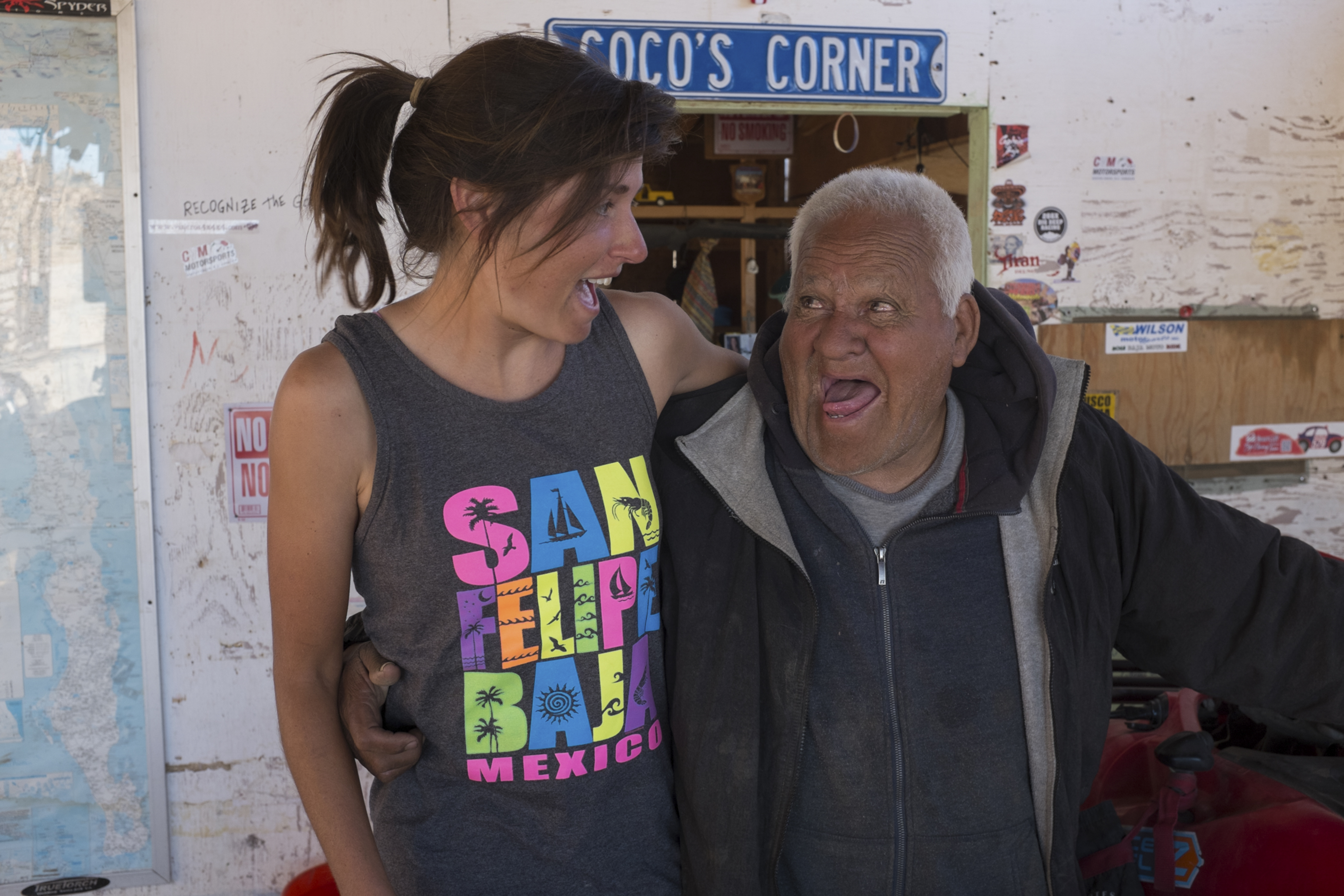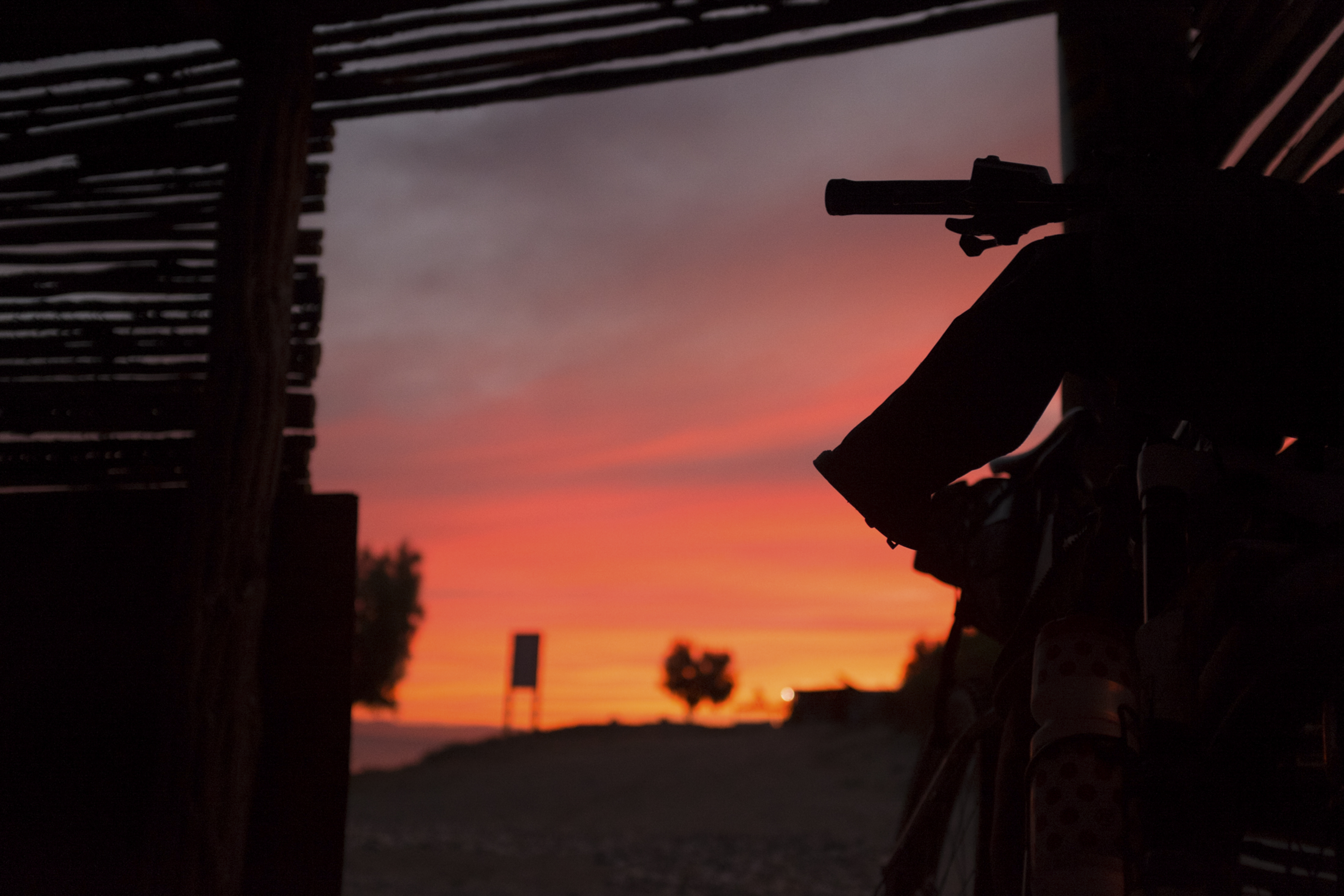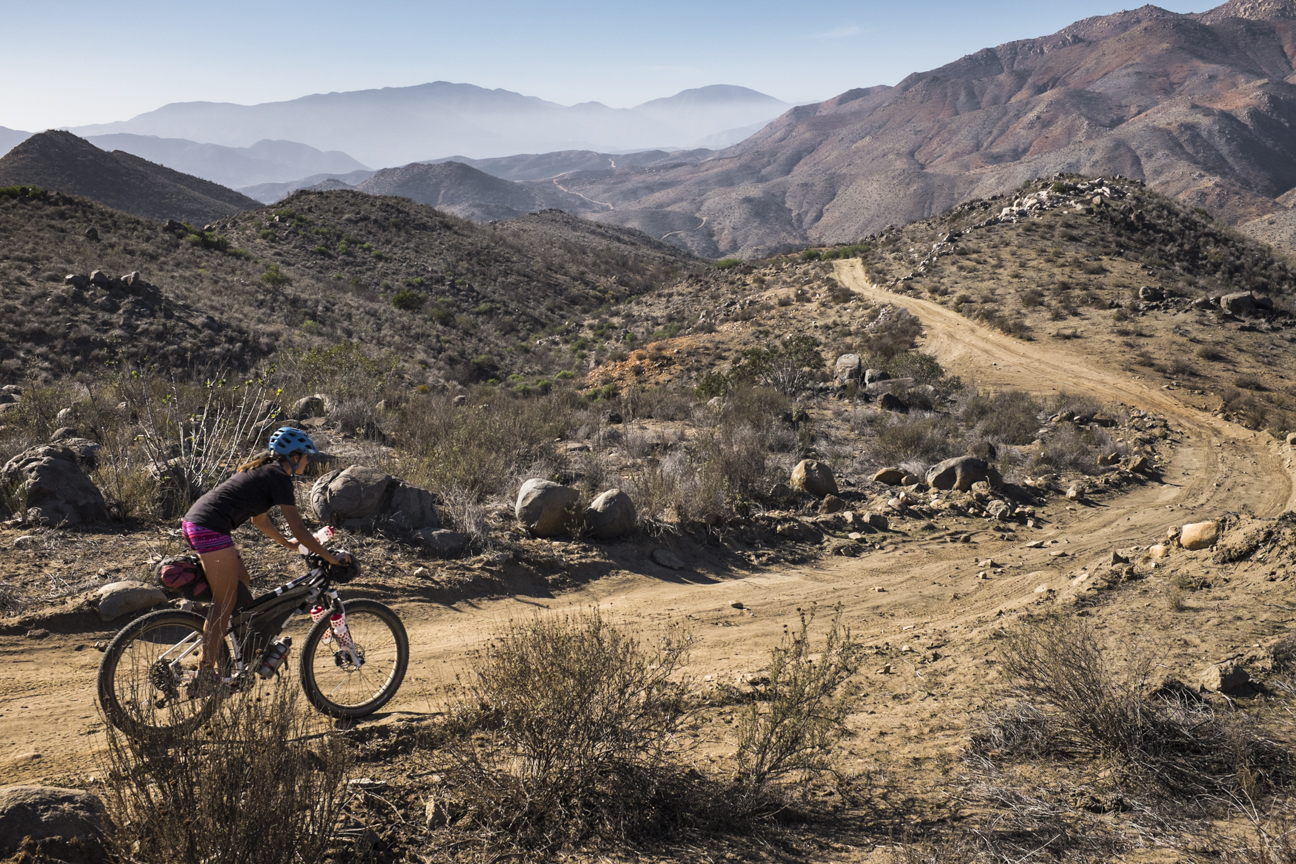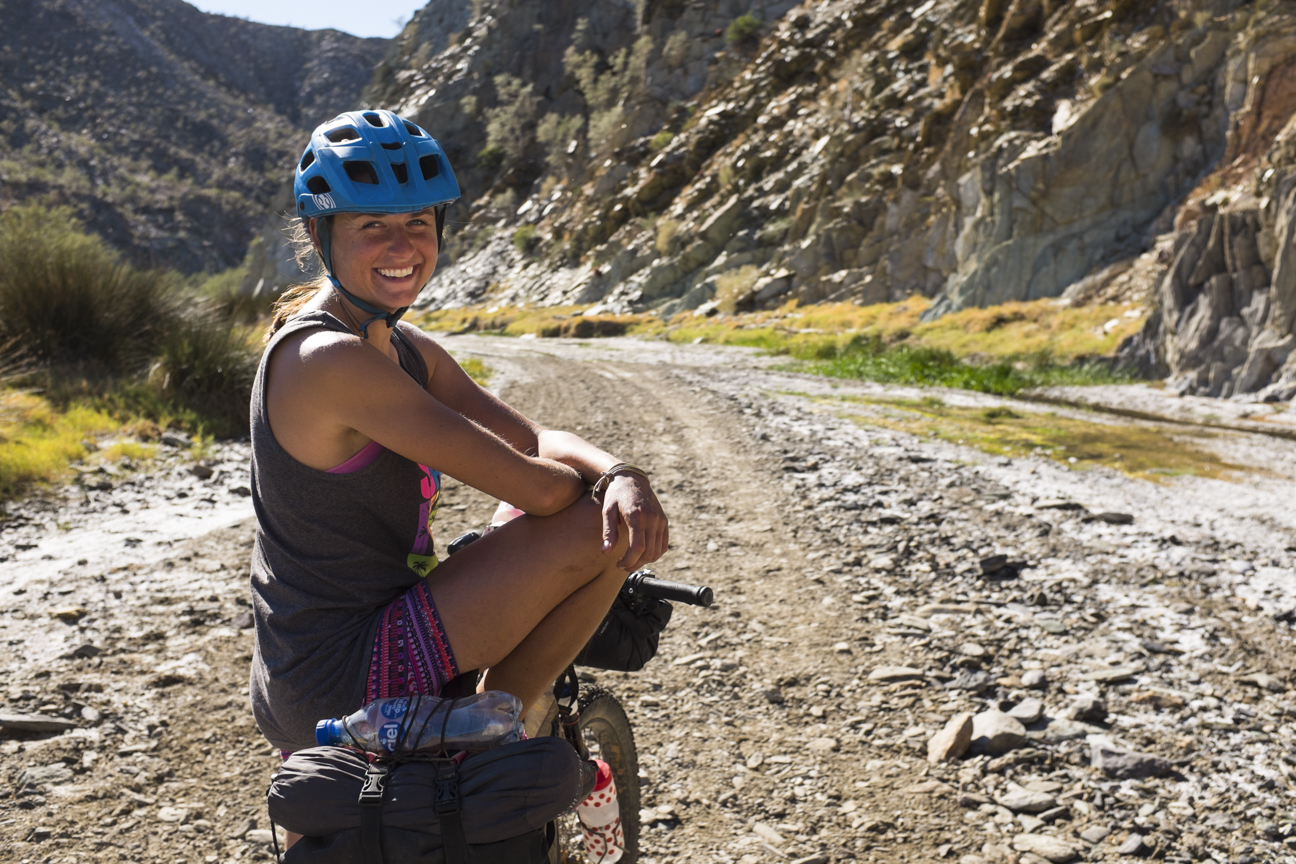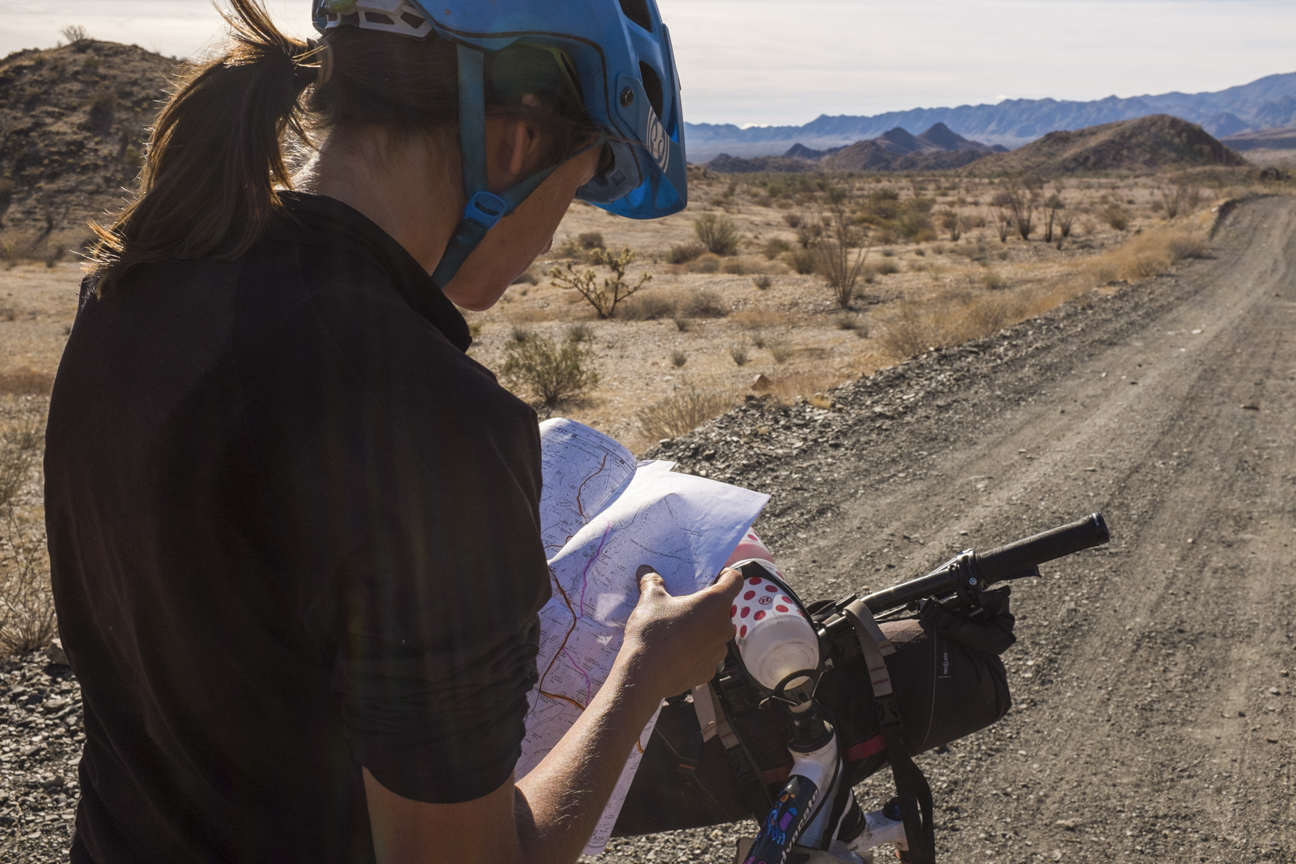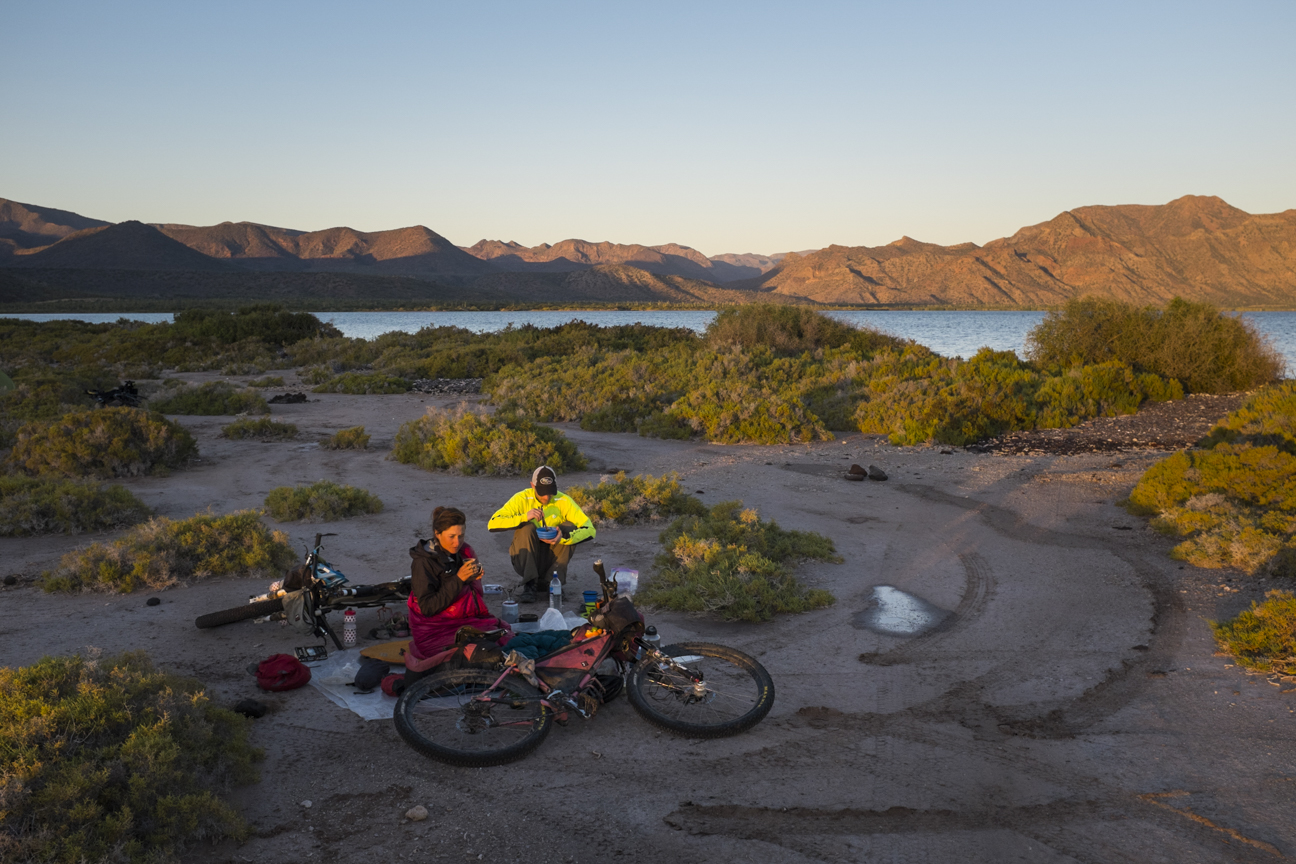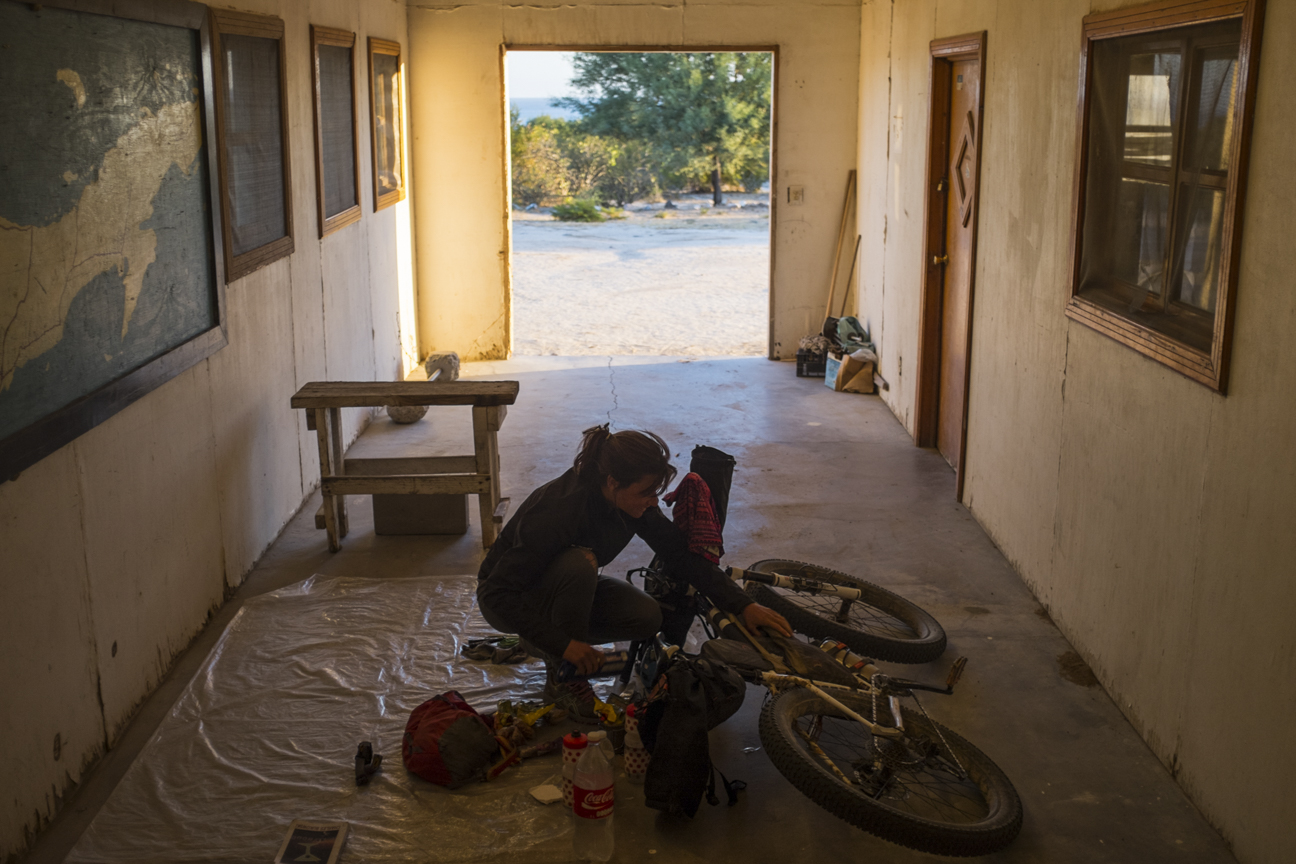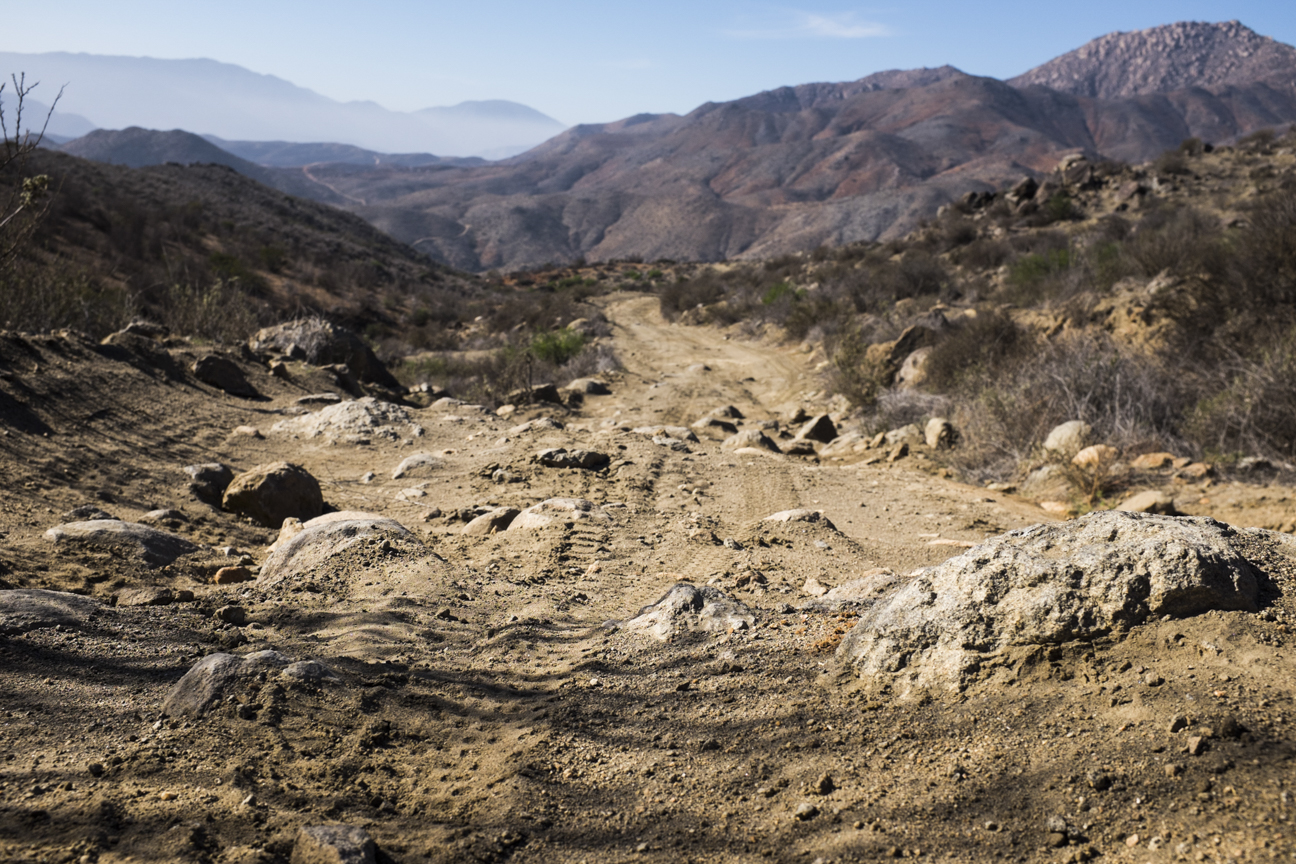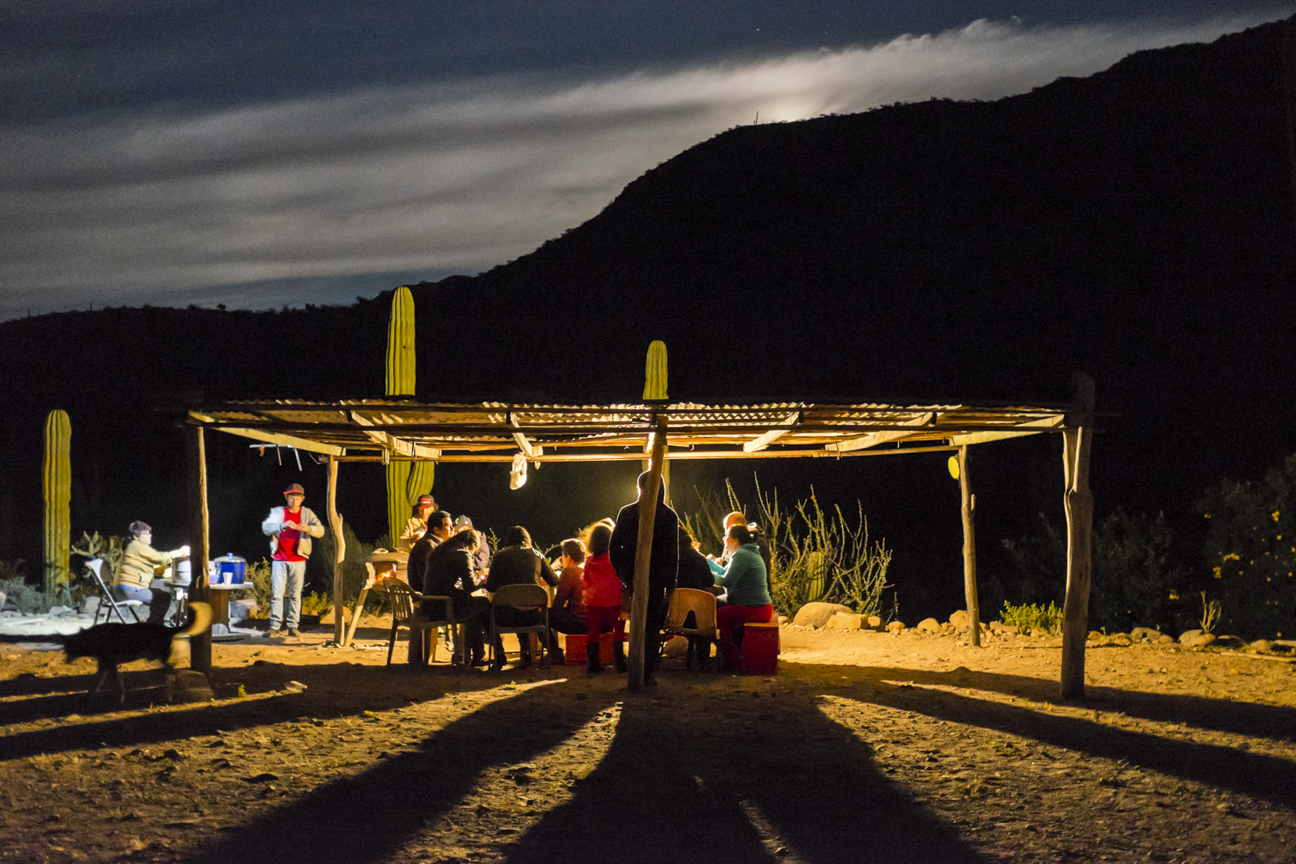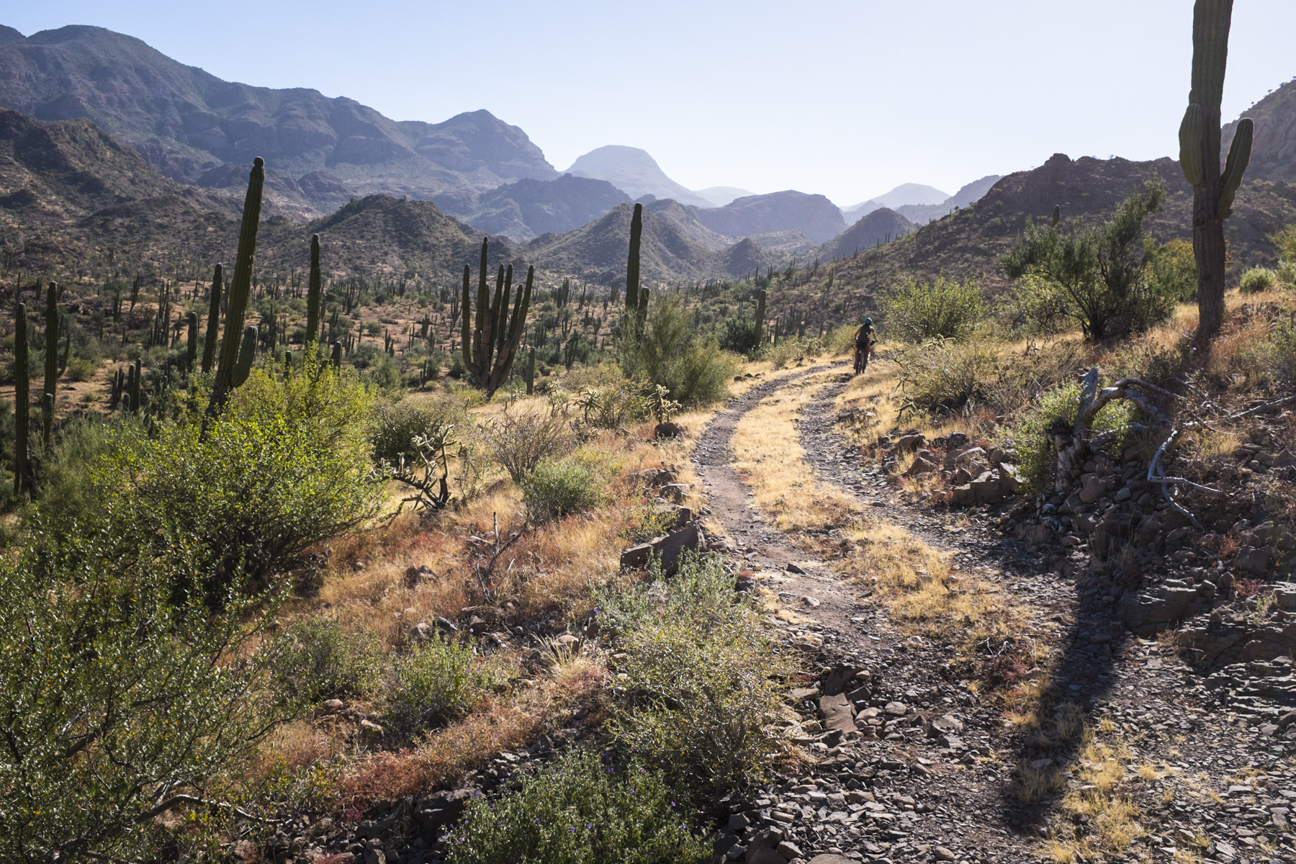The Baja Divide is a rugged 1,700 mile off-pavement bikepacking route down the length of the Baja California peninsula, from San Diego, CA, USA to San Jose del Cabo, BCS, MX, researched and developed by Nicholas Carman and Lael Wilcox in the winter and spring of 2015-16.
This route connects the Pacific Ocean and the Sea of Cortez, historic Spanish mission sites rich with shade and water, remote ranchos and fishing villages, bustling highway towns, and every major mountain range in Baja California on miles and miles of beautiful backcountry desert tracks.
January 2, 2017 marks the Baja Divide group start in San Diego, CA. Prior to this event, we caught up with Nicholas Carman to talk about the process and motivation behind the creation of the route.
The Baja Divide route that you and Lael have created is an incredible resource. What gave you the idea to develop this route?
The idea to publish a route occurred to us while riding in Baja last winter. We crossed the border in early December 2015 hoping to enjoy some fun backcountry tracks and long night of sleep in the desert. Lael and I had ridden in Baja in 2011, on more conventional touring bikes, and with the few off-pavement rides we enjoyed on that trip we knew we needed to come back with more capable bikes. I was already riding 29×2.5” tires, and Lael started the trip on a brand new Advocate Cycles Hayduke with 27.5×3.0” tires. We weren’t sure about the 27.5+ concept at the time. After some years riding fatbikes, Lael was averse to pedaling unnecessarily large tires outside of their useful range, but the 3.0” wide tires on wide rims—tubeless—proved to be the perfect bike for most of the terrain we encountered.
Within about two weeks, after some fortuitous routing connections, it seemed obvious that there was something we needed to create, and to share. I was well aware of the potential that Baja offered—including the riding, the culture, and the climate—and I was also sure that there was far too little information available about backcountry cycling in Baja. There are lots of forums and GPX tracks dedicated to moto routing, but that doesn’t always translate directly to good bike routing. So, over the next three months, with help from a few friends, Lael and I rode all over the place to connect a massive off-pavement resource.
We’re really proud of the final product. The route uses about 93-95% off-pavement routing, and almost all of the pavement is on smaller secondary roads in Baja, which feature very little traffic. The riding is engaging, challenging, but almost entirely rideable. Resupply is found along the route frequently enough to make the route accessible, and the information we provide lowers the stress of guessing where to find food and water. I think the basic guides we have provided will help people get on the route and into the backcountry, although there are still many discoveries to be made on route.
Was it always your intention to create this free resource for everyone?
The resource was always meant to be free, and digital publishing makes the most sense. Most of all we wanted to encourage as many people as possible to discover international backcountry bicycle travel—that’s where the world really comes alive! I often say that our goal is to “put more butts on bikes”, and in this case we’ve succeeded. By making the resource freely available we’re limiting the number of barriers for others to do what we do. I’ve heard all the excuses over the years. So we went down to Mexico with our own money and time and made a route for others to use, and the resource is one less excuse.
Once the route project was underway, we looked around for some help to cover a few basic expenses. We didn’t have to look far, as Advocate Cycles and Revelate Designs each committed some money to cover airfare for three riders from last season, and a few other expenses associated with the women’s scholarship and the group start. As such, it isn’t a business because none of us are making money, but the support of these companies is what helps us offer the resource for free. I’ve often thought that the companies asking for our money should support the things that we love, and the things that make this sport possible. Advocate explicitly does that by supporting ACA, IMBA, People for Bikes, and the Baja Divide. Revelate has been a grassroots supporter of a lot of adventurers and racers over the years, and we’ve known Eric since we bought our first framebags from him out of his garage in early 2012 in Anchorage, AK.
What gave you the idea to organize the group start on the route? Do you think that this group start/group ride structure could take the place of races for this niche within the cycling community?
The group start on January 2, 2017 was conceived last winter when we first published the route concept to our freshly minted www.bajadivide.com website from a hostel in La Paz.
We had talked about the idea for a couple of weeks and were already planning to publish a route, but nobody knew about it yet. And then, with a spare day, I pieced together a basic WordPress.com site and announced the route project. In support of the route project, we suggested a group start from San Diego on the morning of Jan 2, 2017 as a way to encourage people onto the route in the first season, and to provide a unique social opportunity for the bikepacking community. The route concept and the group start were an immediate success. People stated their interest immediately and eight months before the first riders were even on the route, the concept had a strong following. Through the spring and summer of 2016, it was our job to deliver on our promise and we finally published the route the week before Interbike while taking a couple of rest days from the Colorado Trail in Salida, CO.
For many years I’d read in the pages of Bicycle Quarterly about the springtime Pâque-en-Provence meetings that Vélocio and the cycletouring clubs in France would organize. The Bikecentennial of 1976 is also a hugely influential event in American cycletouring, and Lael and I consider it proof of what a small group of people are capable of accomplishing. We were fortunate to meet Greg and June Siple and Dan Burden this summer at the Montana Bicycle Celebration, who are largely responsible for the modern cycletouring movement in the USA.
At the moment there are few bicycle travel gatherings in this country—excepting bikepacking races, organized for-profit tours, and group rides like RAGBRAI or TOSRV—so we went forward with the concept and organized a social group start. In retrospect, I’m not sure we needed the group ride to bring attention to the route, as the response to the Baja Divide has greatly exceeded our expectations. The group start has required a lot of extra work, but it is a novel project and I’m excited to experience this “experiment in living”. I also hope that the group will make a clear statement to communities on the route that our presence has the potential for a positive economic impact. We welcome new businesses and services along the route that provide the kinds of support that cyclists need.
Last spring, I would have been excited to think that a couple dozen people would ride the route this first season. Now, I expect the there will be over 200 people on route this season.
I see a lot of participation in bikepacking races that could easily be redirected to non-competitive events. Also, the success of other group rides concepts including local group events, charity rides, and long-distance group rides are proof that people like riding together. Still, the core of bike travel will always be individual adventures. Most cycletourists and bikepackers are traveling alone or in pairs.
The Baja Divide group start is meant to be a one-time event. It has been a lot of work. The things we want to inspire most are individual adventures. These may be solo or with a partner or some friends, but we would love to see people conceive and design to their own rides based upon the resources we’ve provided.
What aspect of this resource was the most difficult to create? Are there parts of your resource that you wish were available on other routes you have done in the past?
On the ground route research was the most challenging. It required over three months of riding and a lot of time looking at maps and talking to locals. The riding included two rides down the peninsula and a lot of dead ends, but also a lot of successes.
The main published resources include the GPX track, a folder of GPX points representing resupply points and other resources, a simple two-page distance and resupply chart, and a condensed version of the section narratives found on the site. It’s pretty low-tech stuff, but in total it makes a powerful, portable, and low-cost resource.
However, the resources are more accessible and more complete than is available for many other routes. Most routes don’t provide the digital section narratives that we’ve included—those are either included in a printed guidebook or not at all. Digital publishing allows me to update the resource as soon as needed to reflect changes along the route.
Would you personally rather ride an unmapped route as you originally did on the Baja Divide, or follow an established route?
I enjoy both methods of route exploration, and having a mapped resource does not diminish the potential for adventure. In particular, I like established routes because they ensure that you have a connected and mostly rideable resource, although the experiences you have along the way are still very unpredictable. Plus, there’s more to it than the riding. Riding is literally the vehicle to experiencing other parts of travel, when you meet people, encounter weather, and luck upon serendipitous moments that are unique to your experience, like being invited into people’s homes.
Lael and I have enjoyed lots of mapped routes and the Baja Divide is influenced by our experience on the Holyland Challenge in Israel, the Dragon’s Spine Route in South Africa, the 1000 Miles Adventure in Czech and Slovakia, the Top Trail 3 in Montenegro, the GR5 in Holland and Belgium, the Bike Odyssey in Greece, and the Traversee du Massif Vosgien in France. Of course, the Great Divide Mountain Bike Route, the Colorado Trail, and the Arizona Trail are major influences here in the USA.
I do love making new routes while traveling, but doing that day after day takes a lot of effort, especially as part of a longer trip. For that reason, I’m expecting a lot of riders that are trekking from Alaska to Argentina with an interest in off-pavement routing will appreciate the Baja Divide. For about two months, they can take their focus away from daily route design and focus more on the place and the people, and of course the riding should keep their interest as well. There is a lot of engaging riding on the Baja Divide. There have already been three couples that have ridden the Baja Divide as part of much longer journeys.
Even when lots of resources are provided (i.e. information), none of this stuff comes easy. It still takes a lot of work to ride a route like the Baja Divide.
You spent the majority of last winter down in Baja and will be doing that again this year. What is it about this place that you enjoy so much?
We enjoy the climate during the winter months, the vast and powerful landscapes, the cerulean Sea of Cortez, tacos and ceviche, and the people. Our experiences in Baja have always been relaxed and restful, even when paired with strenuous riding days. Big starry nights are one of the best parts of traveling in Baja.
Will the Baja Divide ever be an event like the Tour Divide or do you hope that it will stay a bit more casual?
The Baja Divide group start is not a race. There is no losing in bicycle touring, and I’m hoping that with the resources provided and with encouragement from the bikepacking community, we can achieve a relative success rate as near to 100% as possible. That means, a person sets out for an adventure, they do some riding, and they stick with it even if they have to modify their plans. They go home a changed person, happy, successful, and full of pride. You actually can’t fail at bicycle touring, unless you stay home.
Lael’s Globe of Adventure Women’s Scholarship, the first of it’s kind for women and for bikepacking is a very great idea and it’s very refreshing to see you both create this scholarship. Do you think this is something that will catch on and do you hope to continue this idea in the future?
We hope to offer the scholarship again next year.
We received two hundred amazing applicants and selected a really inspiring young woman named Lavanya Pant, who will be riding an Advocate Cycles Seldom Seen starting on February 14. Influenced in part by the women’s scholarship, I estimate that the percentage of women on route this season is higher than on any other off-pavement bike route in the world, and I expect that trend to continue on the Baja Divide.
Another year, another ride down Baja. What do you look forward to most on adventures like this?
On this particular trip, I’m looking forward to riding the route like anyone else, one pedal stroke after another. I love the linear perspective of long routes likes this, and the feeling of knowing where I am going is calming. Ride, camp, resupply, repeat.
View the Baja Divide route resource online at BajaDivide.com.
